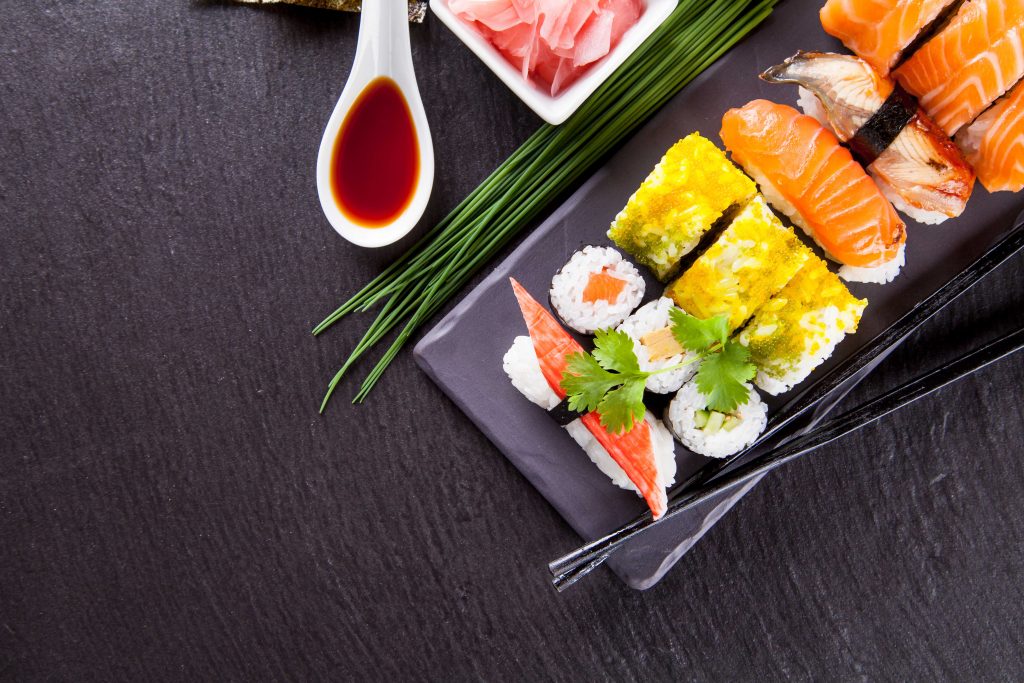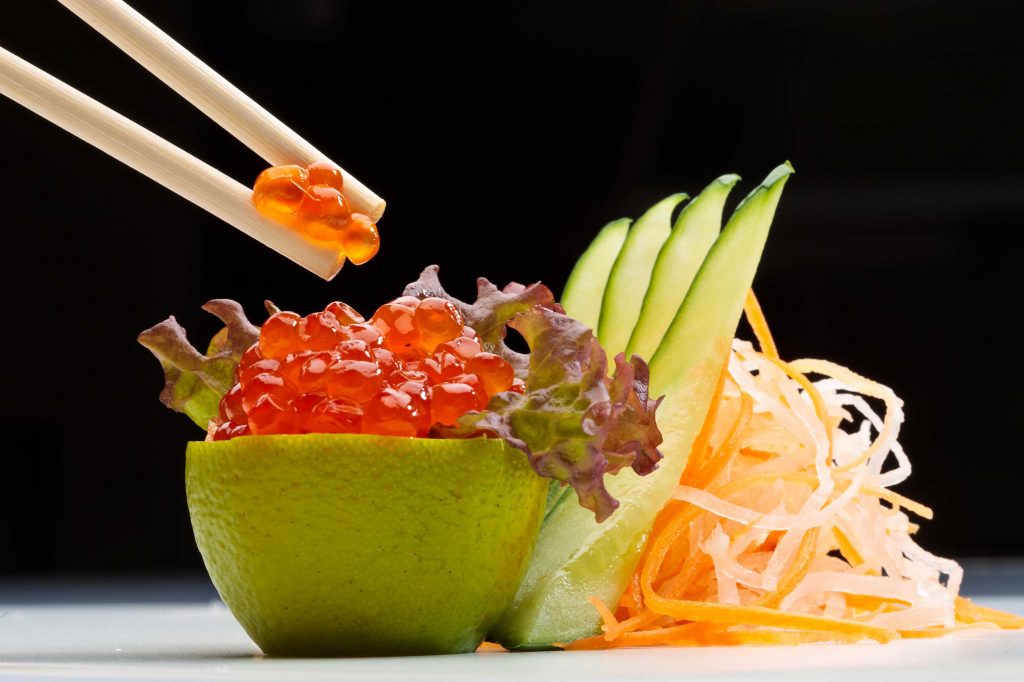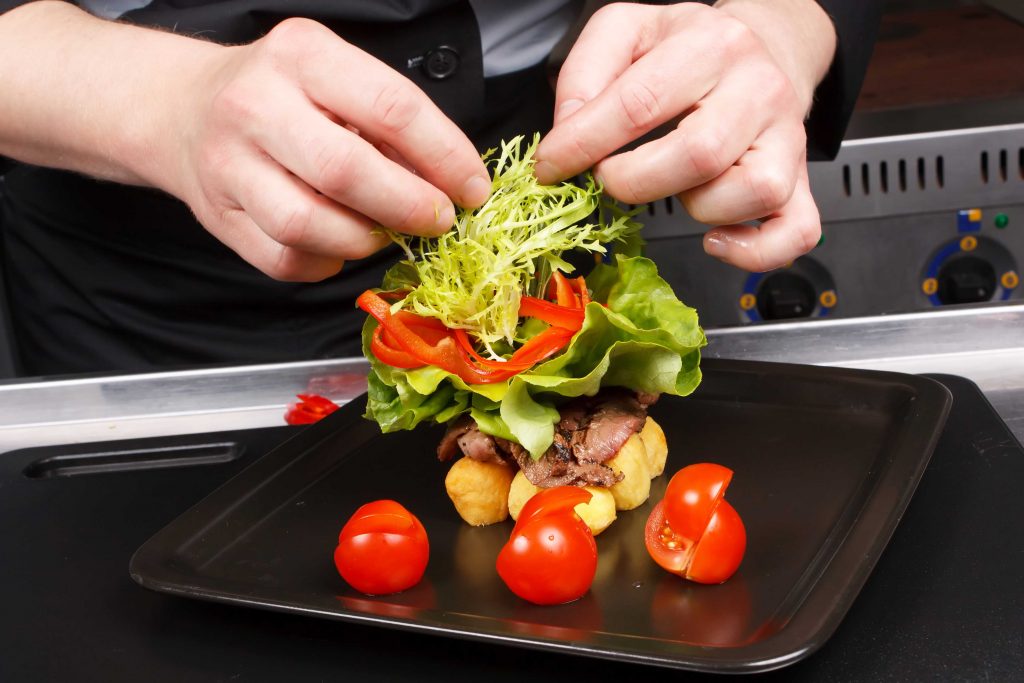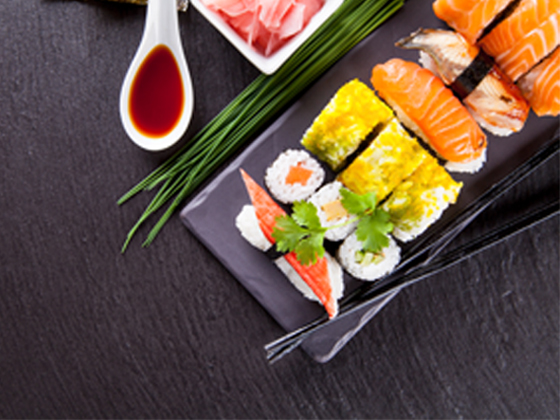Basics to Food Plating
Food plating is a great way for accentuating the appetizing appeal of food and creating the perfect first impression for the customers. All types of cuisine, notably Japanese, Thai, Chinese, and French, have their own methods of plating as stemming from the type of food, culture, and religious beliefs. Yet, within all those differences, lies a clear similarity, and that is the standard of plating.
The 3 Components to Basic Food Plating

Despite the differences in terms of design and principles in plating, the basics of plating is shared among all nations, and they all comes down to 3 main things
- Food – As we want our dish to be as appetizing as possible, the first priority is the food on the plate itself. For instance, if the dish features a steak, then it should be presented it the way that nothing is in the way, thus why all the garnishes should be spread around the steak while the steak itself take center stage.
- Color – the balance of the colors within the plate can help to attract the eyes of the customer as well as giving specific impressions. To illustrate, green makes food seems ‘cool’ to the eye and gives the impression that the food is healthy. Red, on the other hand, gives a sense of heat and spiciness. As for black and purple, which are often used in Asian cuisine as the color of the sauce, gives the impression that the food is of luxurious nature.
- Garnishes – garnishing, like mint leaves, parsley, pepper, or even sauces, act as decorations that can help elevate the dish either in terms of color or taste. Therefore, dishes garnished with spaghetti meat sauce and pepper probably wouldn’t look too appetizing.
These 3 fundamental rules act as the building blocks in which chefs use as a mean of expressing their personal craft.
Japanese–styled Plating

Plating is one of the most important aspect of Japanese cuisine. The principle Japanese chefs follow is that “garnishes are not just decorations, they’re also part of the dish, and thus the customer has to be able to pick them up with the chopstick”. This lead to Japanese cuisine having elaborate and elegant garnishes created via carved vegetables in different shapes. These include creating stripes out of eggplants and fans out of cucumbers, or even grating radish into thin strips, which greatly helps in highlighting the vibrant color of the sashimi. In addition to the garnishes, the plate itself needs to be painstakingly selected for each separate dish.
With Japan being a country that is obsessed with details, it’s not surprising to for the food to be visually captivating in addition to tasting great. This is not to say that other nations doesn’t care about their plating, as different cuisines have their own unique spin on this culinary principle.
Steak Plating

Steak is considered as one of the most preferred dish when it comes to plating as it presents a challenge to the chef that is trying to present as more than merely a piece of meat on a plate. As steak usually comes in most either white or brown, color of the garnishes tend to play a big role is elevating the dish using vibrant colors from tomatoes, carrot, or iceberg lettuce.
Sauce also plays a huge part in plating. Sauces of different colors can easily make a steak look appetizing by giving it a deeper dimension. This can be done via directly pouring sauce onto the meat in combination with the garnishes being placed around the perimeter, or by placing a cup of sauce among the vegetables. The steak itself can also be cut up into pieces as a way to show its doneness before being coating with a delicious sauce, which in turn gives it its moisture.
There’s a saying, “eat food with your eyes”, which exemplifies the importance of plating, showing how the beauty of food can either make or break a dish when it comes to customer satisfaction. Apart from the taste, plating should also be considered as a priority. A dish that is equipped with both a tremendous taste and eye-pleasing plating is, without a doubt, a dish to yearn for.





